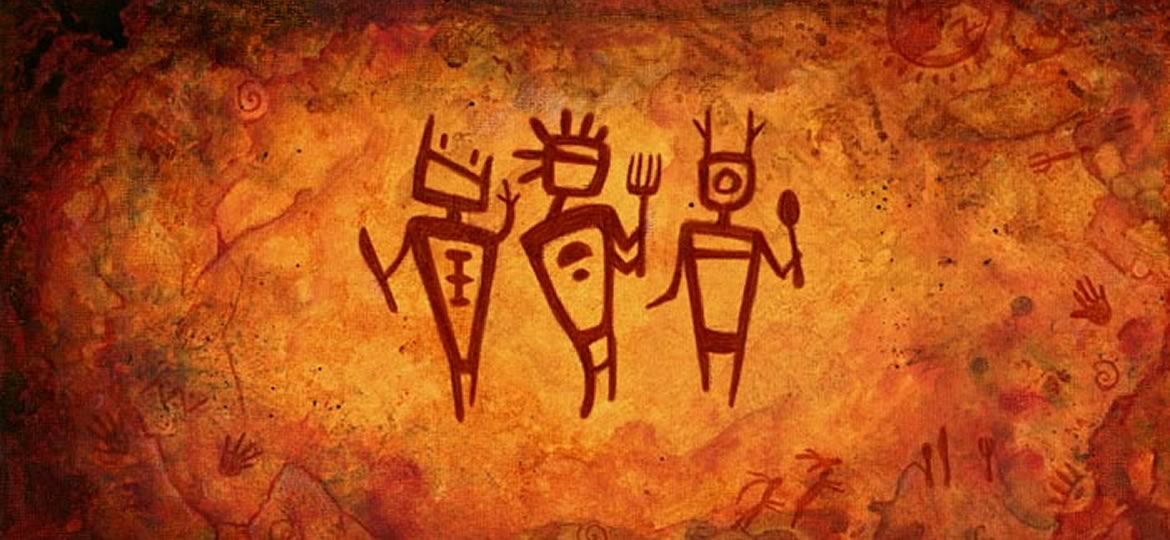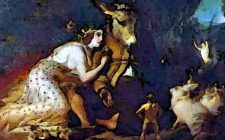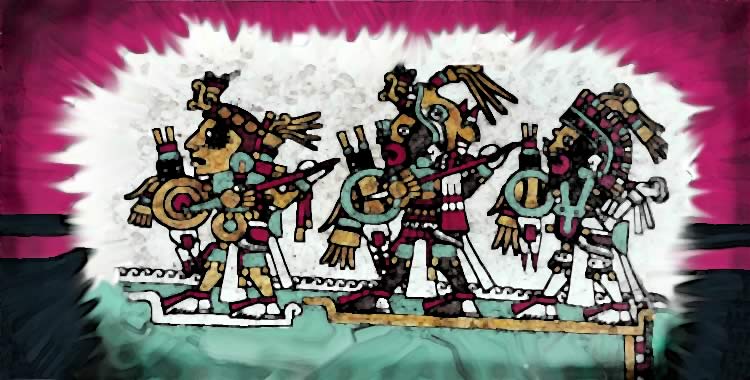T. Kingfisher is the pen name for Ursula Vernon. She’s won a bunch of awards for her stories and comics and novels, and I highly recommend reading some of her short stories to get at least get a taste for her work. I love her for a variety of reasons, but the big one is that she consistently takes things I’m familiar with and then does really interesting things with them. She’s also a gifted artist. Her deviant art gallery is a fun way to lose a few hours.
Ideas to Steal
I actually had trouble narrowing it down to just a few things to look out for in her stories, but I think these are the most useful. Actually, there’s one bit I’d like to mention, but I want to put it in my world, so I’m making it invisible so that my players don’t read it on accident. Highlight the following invisible sentence to read. Anuket city from the Clocktaur Wars Duology has a perfect description of a city with artificers. I want to just copy her prose wholesale and use it as the italics text to describe the capital of this steam-punk city in my world.
American Southwest Fantasy Culture
Kingfisher has written a set of fantasy short stories whose magic and world-building is rooted somewhere in the deserts of the American Southwest rather than the standard Tolkien/Medieval European fantasy tradition. You want to start by reading Jackalope Wives and then The Tomato Thief (they’re free online, and short stories, so you have no excuse not to click and start reading).
If you’re a world builder, you can read read them just to get insights on how to communicate an original, immersive sense of place without info dumps. Keep in mind, these are short stories/novelettes, not epics. Kingfisher does some serious world building in a very tight format. I think they’re both Hugo winners.
A more immediate reason to read them is just to get ideas for a completely different fantasy style. Here are a few (not all) of the supernatural entities she includes that I’m tempted to find a place for in my RPG setting as NPC races:
- Jackalope Wives, who like to throw off their fur skins to dance in the moonlight. They seem like the desert version of dryads or kelpies. “They danced like young deer pawing the ground, they danced like devils let out of hell for the evening. They swung their hips and pranced and drank their fill of cactus–fruit wine. / They were shy creatures, the jackalope wives, though there was nothing shy about the way they danced. You could go your whole life and see no more of them than the flash of a tail vanishing around the backside of a boulder. If you were lucky, you might catch a whole line of them outlined against the sky, on the top of a bluff, the shadow of horns rising off their brows.”
- Javelina, who I never though of as a supernatural creature. She says “They’ll talk the legs off a wooden sheep. We’d both be dead of old age before they’d figured out what time to start.”
- Patterned Man, who has to be the spirit of a snake and is described, “He moved quick then slow and his eyes didn’t blink. He was naked and his skin was covered in painted diamonds. Grandma Harken bowed to him, because the Patterned People can’t hear speech.” They can do some polymorphing/healing magic, but only by biting you to inject you with venom, “He’s one of the Patterned People, and they only know the one way.”
She also includes some elements from Native American cultures that a typical reader would be more familiar with. The amusing thing is that the main character, Grandma Harken, is a bit dismissive of each of them for being impractical to deal with.
- Coyote, is written off with, “I ain’t got the patience for coyotes. They’d maybe fix you up but we’d both be stuck in a tale past telling, and I’m too old for that.”
- Raven, is dismissed with, “I’ve got no patience for riddle games, and in the end they always eat someone’s eyes.”
Another thing I like about how she built this world is that even though it’s only looking at one American region, it’s still clearly not homogeneous. Grandma Harken is an expert in the magic of the desert, a believer in Saint Anthony and swears by “Jesus, Mary, and Joseph”. But in the Tomato Thief, it’s made clear that “the people up on the three mesas” have Kachinas and use a different magic, and she barters with the Mother-of-Trains, who clearly has a magic that has to do with technology rather than the desert. These different approaches to magic live right next to each other, and there’s no need to make them part of the same magic system. It definitely makes it feel more rooted in folk lore than war gaming.
Shamanism
From those same two stories as well as other stories she wrote based on different cultures, she fleshes out a shamanistic approach to magic that is very different than the usual fantasy approaches, which I’ll list as the wizardly approach (Learn spells, there’s an underlying system.) or the clerical apprach (Pray and be granted miracles) or the psionic approach (Practice to bring your intrinsic power under control.)
Her shamans are people who can sense and interact with a supernatural aspect to the world that most people just can’t even see. Animals and places all have spirits or supernatural sides, and if you understand how to get those sides to come out (or where to go to find them), you can bargain with them or work with them to get them to do the thing that they can do. Different animals and places and stuff have different, very specific abilities and personalities, so having an encyclopedic knowledge of what spirit to go to and how to interact with them is absolutely critical. Or having luck and good observation so you can piece together the knowledge to figure it out. I haven’t thought it completely through, but I’d love to create a shaman class who used their skill checks to find and bargain with the right spirits in the right way in order to make magic, especially if everyone else couldn’t see the spirits, so they just see the shaman smoking a cigarette in front of a few bits of string and then staring at a pigeon for a while that stopped to peck at the ground. And then he picks up a dirty feather that fell down and weaves it into his hair and is all “Okay, all done!”
Deities
Her Clocktaur War Duology has has one of the most creative approach to gods I’ve seen. Having read it carefully, I still have no idea how many gods are in her world, other than lots. Clearly some gods are well known and commonly worshiped, while others are obscure enough that even a specialist might not know them all. And the gods that are described all have clear and distinct portfolios and descriptions, but they’re just not at all the sort of gods I’m used to seeing in fantasy.
- The Dreaming God, whose paladins are dedicated to demon hunting. Apparently demons come into the world sometimes and possess people, so the paladins are chosen and trained to be great fighters, but also simple enough to be happy with what they have so that they’re less vulnerable to temptation from demons. Learning how it works really takes the glamor off being a demon-hunting paladin, even though the actual person doing it is every bit the chivalrous bastion of honor you would expect.
- The Many-armed God, whose celibate monks are dedicated to seeking out knowledge. They’re uniformly brilliant, but highly misogynistic. One of the highlights of the book is watching the character arc of a very rational, sheltered scholar-monk confront evidence of his own bias and revise his world view.
- The Hunting Crone, who is one of the obscure gods, but the one priestess of hers we meet in the book is an earthy, kind prophetess for a god dedicated to wild and lonely places. Interestingly, we meet her in a city, but as one of the characters says, “Cities are often lonely places.”
More than that, for a series who has such personal gods and who shows what it’s like to channel a divine presence (more than once), the gods remain incredibly enigmatic. They’re not just people with super powers. And they remind me a bit of a quote from Lois McMaster Bujold’s The Curse of Chalion about how much a god loves his saints – “As a teamster loves his mule that carries his baggage…whipping it over the high passes.”
Villains
One of the great things about her short stories is that many of them that are from the point of view of the villain, or at least from the point of view of the characters with whom you’re not supposed to sympathize. All the following are short and free online:
- Elegant and Fine is from the point of view of Susan from the Chronicles of Narnia, and completely changed my perception of her.
- The Sea Witch Sets the Record Straight is the Little Mermaid, but told from Ursula’s point of view.
- Never about another way to see the Peter Pan story, where Peter is definitely not the good guy.
- Toad Words is Diamonds and Toads (a more obscure fairy tale) from the point of view of the wicked sister who is cursed to have toads and frogs fall from her mouth when she talks.
The thing I find useful about reading stories like these from an RPG perspective is is that they help put me in a frame of mind to craft three-dimensional antagonists who have their own motivations and personalities and to develop situations where different character may plausibly view them different ways. More importantly, it helps put me in the frame of mind to think about what all those heroic actions would really look like, and then build a world that’s more grounded and immersive. Where a bunch of foreigners can’t just come into town throw their weight around or slaughter anyone who looks at them funny or do whatever heroes normally do in RPGs without it impacting the world around them.





Oh, wonderful timing, I’ve actually been trying to remember who wrote “Elegant and Fine” so I could read it again and I was having no success googling it. Thank you for pointing me in the right direction!
Glad I could help, and welcome to the blog!
The link provided unfortunately seems to point to another article on this site, instead of the story at http://www.redwombatstudio.com/elegant-and-fine/
Ack! I’m a crappy proof reader. Thanks for catching that. And fixed!
[…] our Beloved Wombat’s works, and I suspect non-roleplayers will enjoy it as well” — “Stealing from T. Kingfisher” at The Overprepared […]
You should also note that T. Kingfisher also writes as Ursula Vernon. Her Hugo-winning graphic novel “Digger” is online, and well-worthy of any DM giving it a read. (And probably worth a whole article of its own.) At one point I dropped a bunch of characters into Digger’s world and the players loved it.
You can also find records of Ursula’s own dungeon-delvings online, and they’re a major hoot!